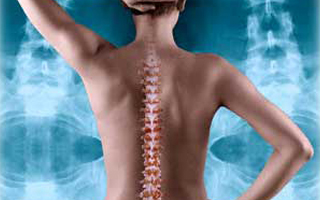Have you ever wondered what the ‘cracking’ noise is when your chiropractor performs an adjustment? You might have heard it called an “adjustment” or a “cavitation”. Whilst you may understand these terms, you may not completely understand what actually causes the sound. Put simply, the sound is created by gas forming between the joint surfaces.
1. The background of joints.
To understand the cavitation process, it is helpful to have some background knowledge on joints. The most common joints are diarthrodial joints, which have two joint surfaces and are covered in smooth cartilage. These joint surfaces are surrounded by a joint capsule, which contains a lubricating fluid called synovial fluid. This fluid contains nutrients for the joints including oxygen, nitrogen and carbon dioxide, which helps keep the joint healthy and maintains a normal and smooth range of motion. Each joint is surrounded by a different number of ligaments and muscles, which give the joint its stability and flexibility.
2. What creates the ‘cracking’ sound?
The sound created when receiving a chiropractic adjustment is made when gas is formed between the joint surfaces. A healthy joint moves in its normal, full range of motion, while a restricted or tight joint will have a smaller range of motion. One aim of an adjustment is to increase the joints range of motion. The way in which this is done is by taking the restricted joint to the end of its range and performing the adjustment.
An adjustment is a controlled stretch of the joint capsule causing the joint surfaces to separate (within normal ranges) and the gases are quickly released from the synovial fluid into the joint creating the popping sound. These gases create a momentary vacuum within the joint, which will slowly dissolve back into the synovial fluid. This also explains why a joint, your knuckle for example, cannot be cracked repeatedly; the gases need to dissolve back into the joint before it can be ‘cracked’ again. This refractory period usually takes about twenty minutes.
3. Is cracking your joints bad for you?
Evidence shows that there is no correlation between ‘cracking’ your joints and the development of osteoarthritis, but this isn’t to say you should continue cracking your joints. If you continue to ‘crack’ your knuckles, toes, back or neck, you will over time loosen the surrounding ligamentous and muscular structures, which will make the joint more injury prone.
Adjustments should always be completed by a qualified Chiropractor. Australian Chiropractor’s complete 5-years of study and training and have a complete understanding of the human body, nervous system and its full potential.
4. What should I do if my joints crack a lot?
Over cracking of joints can create unnecessary increased movement known as hypermobility. Usually when an area of the spine is restricted or stuck, the spinal joints above and below are required to move more so you can maintain your flexibility. This movement above and below the restriction will eventually create a hypermobile joint which can present itself as a joint that cracks repeatedly. By clearing the restricted joint with chiropractic adjustments, the areas above and below are no longer required to have increased movement and hence will stop cracking.
If you find your joints crack often, ask the team at Neurohealth to assess your spine and joints. We can help you with advice on what your body needs.
If you would like more information or would like to book an appointment at Neurohealth Chiropractic – please call the clinic on 9905 9099 or email us admin@neurohealthchiro.com.au or fill in the contact form from our website www.neurohealthchiro.com.au
Sign up to receive Neurohealth Chiropractic’s Free monthly health newsletter on the Right Hand Side of this page. Filled with great information and lots of easy health tips to keep you at Optimal Health!
This article is written by Dr. Steven Cannon, Chiropractor – Neurohealth Chiropractic




